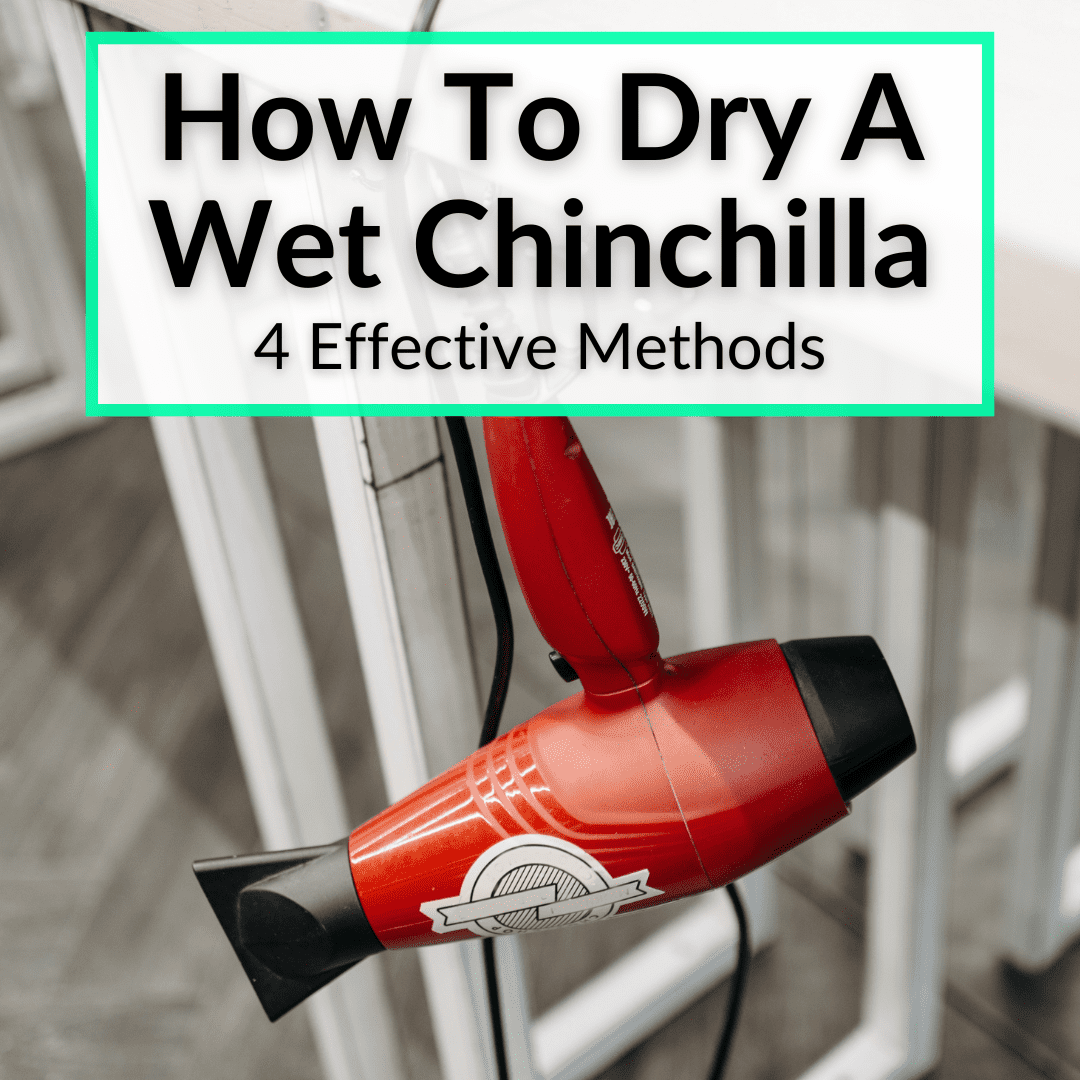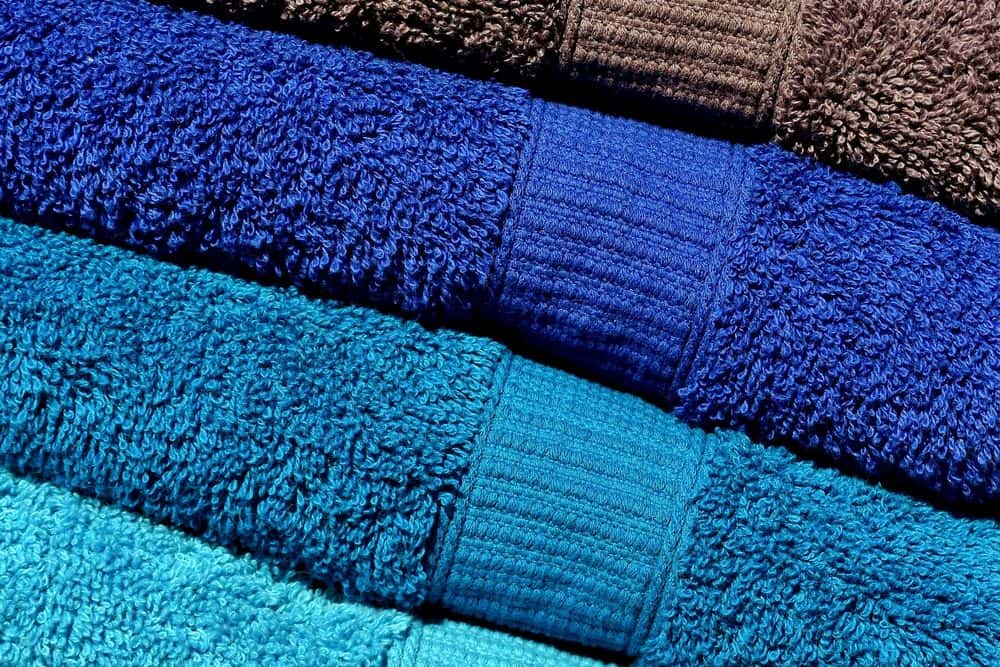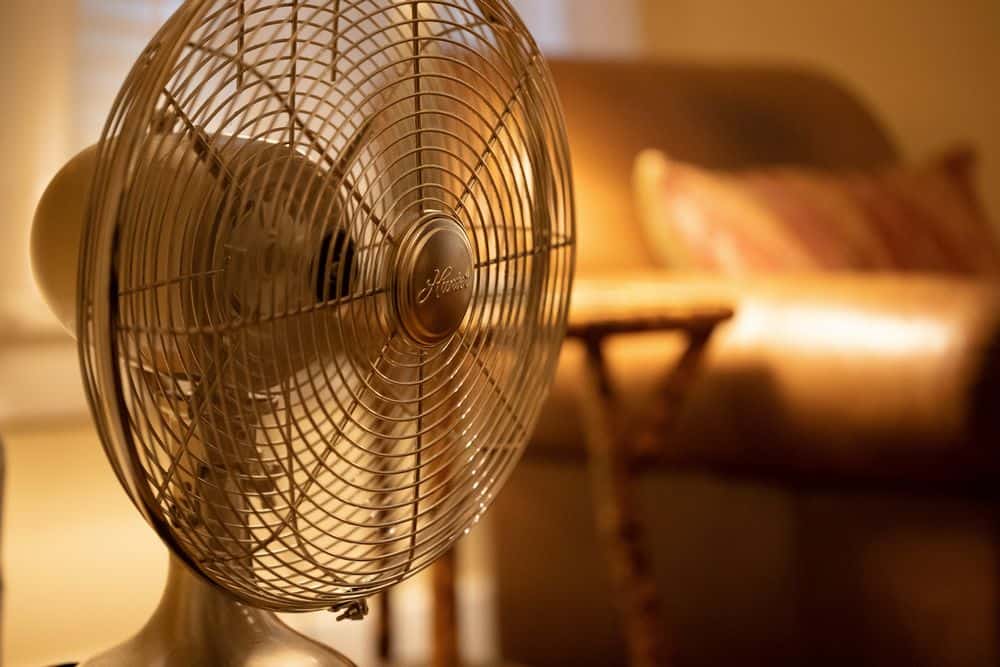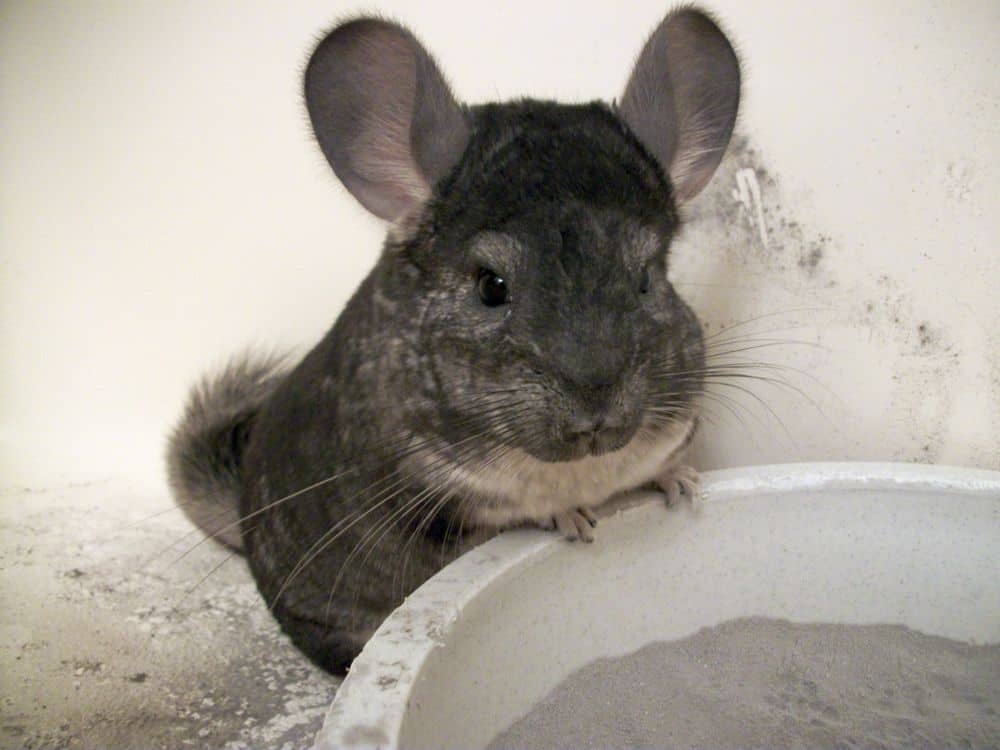
In fact, you should never get a chinchilla wet in the first place.
They avoid getting wet in the wild, because being wet often means becoming sick and dying.
We will get into why chinchillas should never get wet below. And here, in more detail.
But sometimes there is nothing you can do and your pet gets wet.
If that happens, you need to know how to dry a wet chinchilla effectively.
And that is exactly what we will show you below.
Keep reading for 4 effective methods of drying a chinchilla. We will walk you through each one step by step. Choose the one that makes the most sense for you and your pet (some will not like all of the methods).
Contents
- 1 How To Dry A Wet Chinchilla (4 Effective Methods)
- 1.1 How To Dry Chinchilla Fur: Final Thoughts
How To Dry A Wet Chinchilla (4 Effective Methods)
Here are step-by-step guides to four different methods for drying a wet chinchilla. Not all chinchillas will like all methods, or even any of them apart from the last, so try them all until you find the one your pet hates the least.
Method 1: Soft Towels Followed By Dust Bath

This is a tried-and-tested method to dry a wet chinchilla and should eliminate most of the water from your chinchilla’s fur.
However, it is only useful if your chinchilla is used to being handled. If your chin hates being held, you may want to use the other methods explained further below in this guide.
Items Needed
- 2 to 4 small to medium-sized towels
- Dust bath house or bowl
- Chinchilla dust
Steps
- Place your pet on a soft towel and also gently rub its fur with another towel.
- Do not rub vigorously. Be gentle and simply pat the fur dry.
- You can also press down the towel on the fur to absorb the moisture.
- Replace the towel with a dry one once it is soaked.
- Repeat the process until the towels have soaked up most of the moisture. Be patient. This can take a while.
- After your chinchilla is 75% to 80% dry, provide it with a dust bowl to roll in.
- Allow it to stay in the dust bath for at least 10 to 15 minutes. The dust will trap and absorb all of the remaining moisture from your pet’s fur.
- If needed, repeat the entire method to completely dry your pet.
Method 2: Fan-Drying Followed By Dust Bath

Air-drying may be a good way to dry your dog but it won’t work for your chinchilla. Air drying could result in the trapped moisture remaining under your chin’s thick fur for hours, even days.
This could make your pet susceptible to bacterial or fungal skin infections. So, please use a fan to dry your chin, because it will help dry the excess moisture and reduce the chance of mold formation on your pet’s skin.
Items Needed
- Towels
- A small desk fan or ceiling fan
- Dust bath house or bowl
- Chinchilla dust
Steps
- First, dab the excess moisture using the towels as explained in the method above. You will need to get your pet at least 50% to 60% dry using towels. This is very important!
- Next, place the desk fan by your pet’s cage. Allow it to run for a few hours. Make sure your pet is not uncomfortable. This will eliminate all of the remaining moisture.
- If you use a ceiling fan, place your chinchilla’s cage underneath it.
- Run the fan for a couple of hours.
- Check your chinchilla. Ensure it is adequately dry.
- If not, dab up the moisture some more with towels.
- Provide a dust bath to your chinchilla.
- Allow your pet to bathe in the dust bowl for at least 10 to 15 minutes.
- If needed, repeat the process until your chinchilla is completely dry.
Method 3: Hairdryer On The Cool Setting

A hairdryer can speed up the drying of a chinchilla. However, you must not use high heat, because chinchillas are delicate creatures that can quickly overheat.
So, please make sure to keep the dryer on its lowest setting, or the cool setting.
Items Needed
- Several towels
- A hairdryer
- Dust bath house or bowl
- Chinchilla dust
Steps
- Dab the excess moisture from your chinchilla’s fur with towels as explained in method 1 above.
- Next, use the dryer. Keep the dryer’s nozzle at least 5 to 10 inches from your chinchilla’s body. Keep moving the dryer to avoid concentrating the heat on one spot of your chinchilla’s body.
- Make sure your little pet is not too startled by the dryer’s noise. If it appears uncomfortable, please discontinue use.
- Once your pet is at least 50% dry, provide it with a dust bath to absorb all of the remaining moisture. Allow your pet to bathe in the dust bowl for at least 10 to 15 minutes.
- If your pet is still not completely dry, use the dryer again and then repeat the dust bath.
Method 4: Simple Dust Bath
In the absence of a hair dryer or fan, or if your pet does not let you towel-dry it, simply providing a dust bowl to your chinchilla could help it dry faster.
High-quality chinchilla dust is made of volcanic ash or pumice sand. These ingredients have superior absorption which can eliminate almost 90% of moisture from your wet chinchilla’s fur.
Materials Needed
- Dust bath house or bowl
- Chinchilla dust
Steps
- Place the dust bath house or bowl on the ground with a significant amount of dust in it.
- Your wet chinchilla will gratefully climb into the bowl and frolic around.
- Allow it to dust-bathe for at least a quarter of an hour.
- This will trap all the moisture and leave your pet clean and fresh.
- If your chinchilla is dripping wet, the dust might stick to its fur.
- Allow your pet to shake off the excess dust.
- Check your pet. If it is still wet, provide it with another dust bath.
- Take your pet to the vet to be safe.
What Happens If A Chinchilla Gets Wet?
Chinchillas should not get wet. They dislike the water and are even afraid of it. Most importantly, if your chinchilla accidentally gets wet, it may not be able to regulate its body temperature.
As a result, it could develop hypothermia or pneumonia.
Chinchillas have thick fur that traps moisture droplets, inviting bacteria and mold. The moisture creates a breeding ground for these pathogens, resulting in various skin issues.
That is why it is important not to let your chinchilla get wet.
If it accidentally gets wet, provide it with a dust bath and the methods above to dry it quickly. If needed, please take your pet to the vet to ensure it does not develop any serious health issues like the ones mentioned above.
Can Chinchillas Get Dry?

Chinchillas have nearly 50 hairs per follicle. This creates a thick, dense, and protective coat. This dense coat is necessary to keep chinchillas warm in the harsh, arid environment where they are naturally found.
It also helps in preventing parasites by not allowing the parasites space to breathe! But the thick fur also has its downsides.
It makes drying a chinchilla a tedious task. The dense fur with all the hairs close together makes it hard for air to reach underneath. This prevents the moisture trapped underneath from evaporating quickly.
As a result, a wet chinchilla’s fur can remain wet for hours, even days, potentially causing a host of skin issues and health problems.
Fur remaining damp for several days can also result in ringworm-like infections that may be contagious to other chinchillas.
To add to this, chins do not have sweat glands and cannot regulate their body temperatures. The trapped moisture could lower their body temperature dangerously, resulting in hypothermia or pneumonia.
How Do Chinchillas Stay Dry In The Wild?
Chinchillas are native to the arid climate of the South American Andes Mountains. Experts suggest that chinchillas stay dry by hiding in the natural rock formations in their habitat during wet weather.
They also dig burrows at the base of the rocks or stay inside crevices when it rains.
Moreover, they take frequent dust baths in the natural volcanic ash found in these areas. The ash has a super-absorptive quality that helps remove all the trapped moisture from the chinchillas’ fur.
How To Dry Chinchilla Fur: Final Thoughts
You never want your chinchilla to get wet. With their thick fur, it can take a long time to dry completely, because moisture easily gets trapped under the fur.
This trapped moisture can cause your pet to get sick and can even be fatal. And it can happen fast.
That is why you need to know how to dry a wet chinchilla effectively. All four methods above work, but not all chinchillas will accept all of the methods. Find the one that works best for your pet.

Leave a Reply